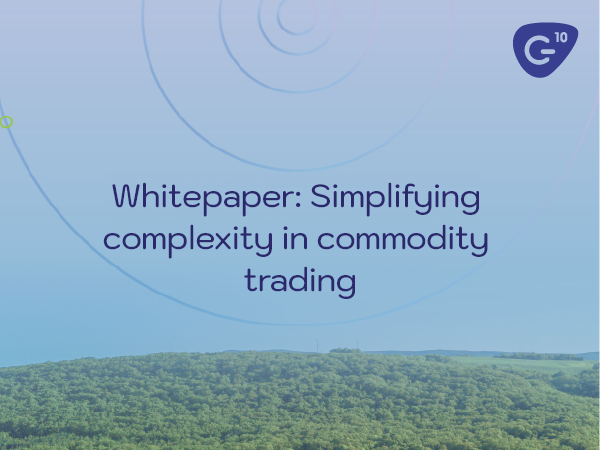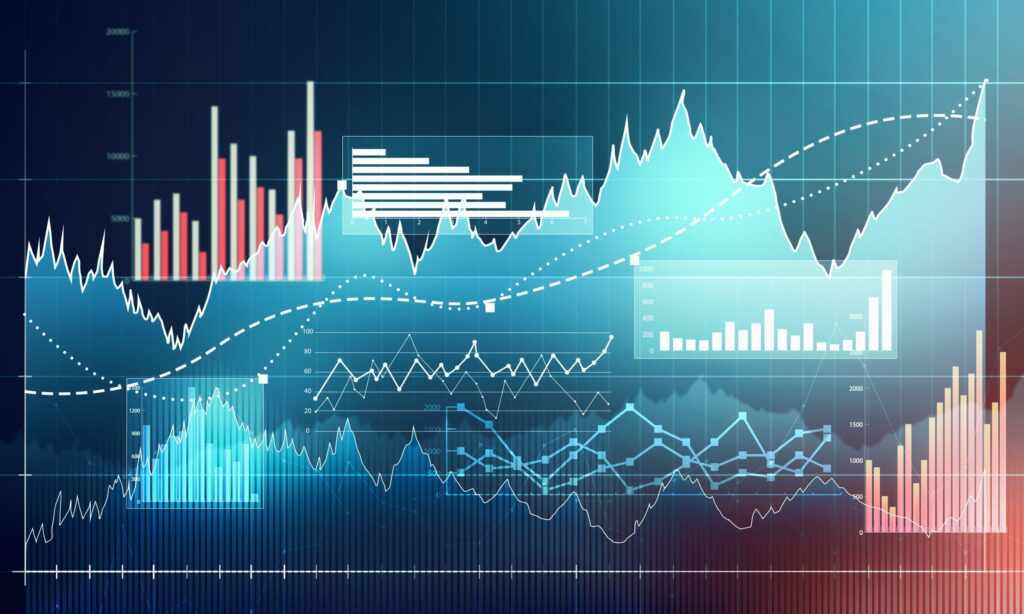In today’s commodity trading world, efficiency is key. That’s why Gen10’s CommOS is designed to bridge traditional methods with modern commodity trading demands for seamless integration and automation.
Gen10 is in the business of joining the dots and crossing the T’s, so that your people don’t have to. We know that the digital enterprise must address the bigger picture, so Gen10 is focused beyond CTRM or Commodity Management – although we offer such solutions – on ensuring that your enterprise is primed to seamlessly and easily perform all the other activities and reporting needs that come with trading these days. Not only that, but the big picture helps join the dots for traders and other specialists by presenting them with up-to-the-minute information that they can use to make better decisions, improve profitability, and reduce risk.
With modern workflow and intelligence built in, much can be automated using Gen10’s expert and innovative approach. We apply our commodity management solutions to your existing systems so that you can integrate all your various workflows and tie them into your operations, removing the organisational silos that cause so much damage. Organising these extra services so that all your data is integrated, and they all tie into your daily workflows reduces the risks and workload of sharing information, as well as automating reporting and accountability processes, reducing their burden too.
Gen10 also uses APIs to quickly access external data, both from your own systems (ERP, accounting, carbon calculators, etc.), and from external sources, such as vessel tracking and geolocation services. Bringing these data sources together in one system makes them accessible to your entire team, especially when the data can be manipulated in various formats and visualisations so that every individual can use it as they need within their own role. Integrating these external data flows helps your operations with the growing ESG compliance burden and innumerable other operational benefits, including faster operations and fewer operational risks. It also improves traceability beyond the realm of ESG, improving efficiency and providing business results across reporting, compliance, and accountability, as well as empowering better trading decisions.
We connect the physical world to the digital, with traceability, sustainability, Scope 3 emissions and container tracking all together in one system, by leveraging external sources of supply chain data to bring it all together. And this takes traders and operators away from the repetitive transactional tasks that don’t add value to the business (such as reporting or copying information for others to use later), giving them more time to focus on the strategic commodity management that drives business forward.
Leveraging external data sources reduces the data input needed whilst providing a greater output than ever before. And this data may come from places you do not expect as your organisation likely has many external data sources that are not being fully utilised. For example, if you receive a warehouse receipt, that contains a great deal of valuable inventory information that is useful for operators, traders and even risk managers. So in an ideal world (or today with a Gen10 system) that information is instantly accessible to each of these teams, without the need for an operator to copy it across or compile new reports based on the data that already exists.
Using a system to integrate these data sources means that the hard work is done for you and your team can use your quality data, container tracking, and other information instantly to support their own roles without needing to report and update other teams. Your system is therefore joining the dots for you in the background, leaving each individual to work within their own orbit. They complete their own part of the process whilst indirectly powering other areas of the business too, with each team benefiting from the collective actions of the others, without the need for formal reports or hard system connections.
And rather than traditional methods of sharing data within the organisation, these connections are much less rigid, operating in the background and changing as things progress. This data management approach is all about making information available to teams without affecting them, so that they see the benefits of the additional data connections, without the data flows intruding on their work. Your people can all operate in their own spheres, free to move as they need, whilst the dots connect unseen in the background. This contrasts with what usually happens when organisations attempt to join the dots by increasing reporting, even automated system reporting, between teams – which only adds to administrative burdens and complexity.
The versatile background connections are made possible by the evolution of data management systems. Where CTRM systems used to simply provide a repository for information, they later began to include more analytics tools so that once data was in this repository, better decisions could be made based on it. And more advanced systems then began to incorporate big data too. Big data is all about gathering large volumes of hard-to-manage data from many different sources and analysing it all in one place. With this model and the ability to integrate different data sources automatically, your team can all make better use of the data and don’t need to spend their time manually depositing data into the system.
Without integrated systems, all traders have a database to manage their positions – whether a spreadsheet, CTRM, or other Commodity Management System. Within that database, when operators are managing shipments, there will be a place to enter the vessel name, ETA, and other journey information. But then when the vessel is at sea, these operators need to use an external web page, or possibly even enquire by email or phone to discover whether the ETA has been updated since they entered the information, and then manually change it if so. And these challenges are compounded further if other teams also need access to it – not only in ensuring the data is shared, but in making sure that it is clear which record is the correct and up to date one if there are conflicting records.
But by incorporating this vessel tracking data directly into your Commodity Management System, we allow operators to see immediately whether any vessel information has changed, within the system they are already using to manage every aspect of the logistics process. And if the ETA has changed, they do not need to take any action to update the records elsewhere. Because our Commodity Management System, CommOS, shares information instantly across all internal teams, there is no need to copy or re-enter the information, as other teams can instantly use it for their own purposes. And incorporating the vessel journey time into your traceability systems means that you can automatically calculate carbon emissions too, based on the actual vessel data rather than a broad estimate. Reducing the ESG reporting burden is therefore just one added benefit of connecting to additional data services to improve the day-to-day operations of trading and shipping commodities.
To learn more about how CommOS can assist with seamlessly integrating data sources, automating workflows, and improving decision-making, read our full whitepaper.
Want to read more?
Subscribe now for monthly updates
By submitting your details you agree that we can store your data and communicate with you. You can opt out of these communications at any time. Read all in our Privacy Policy.



